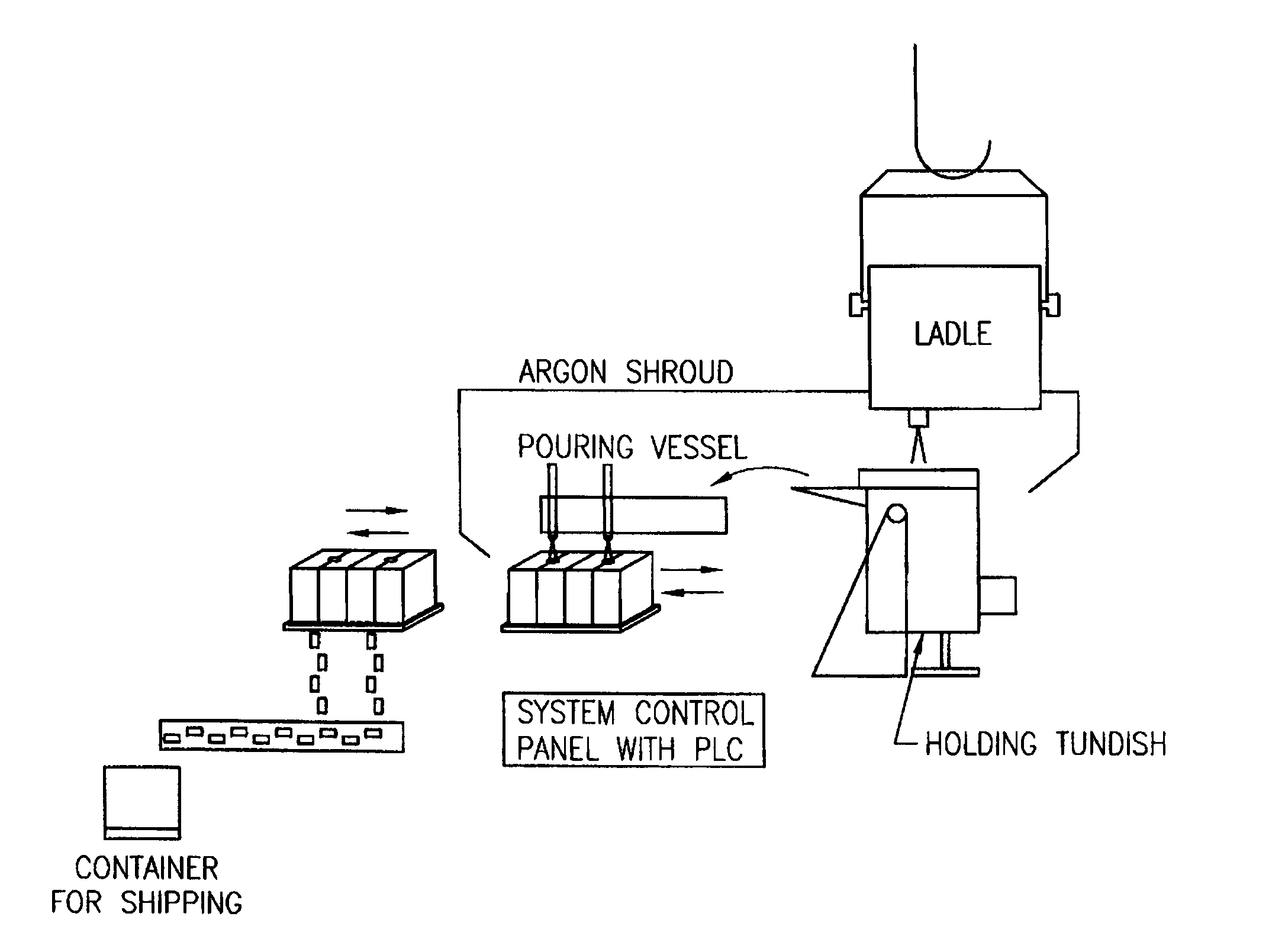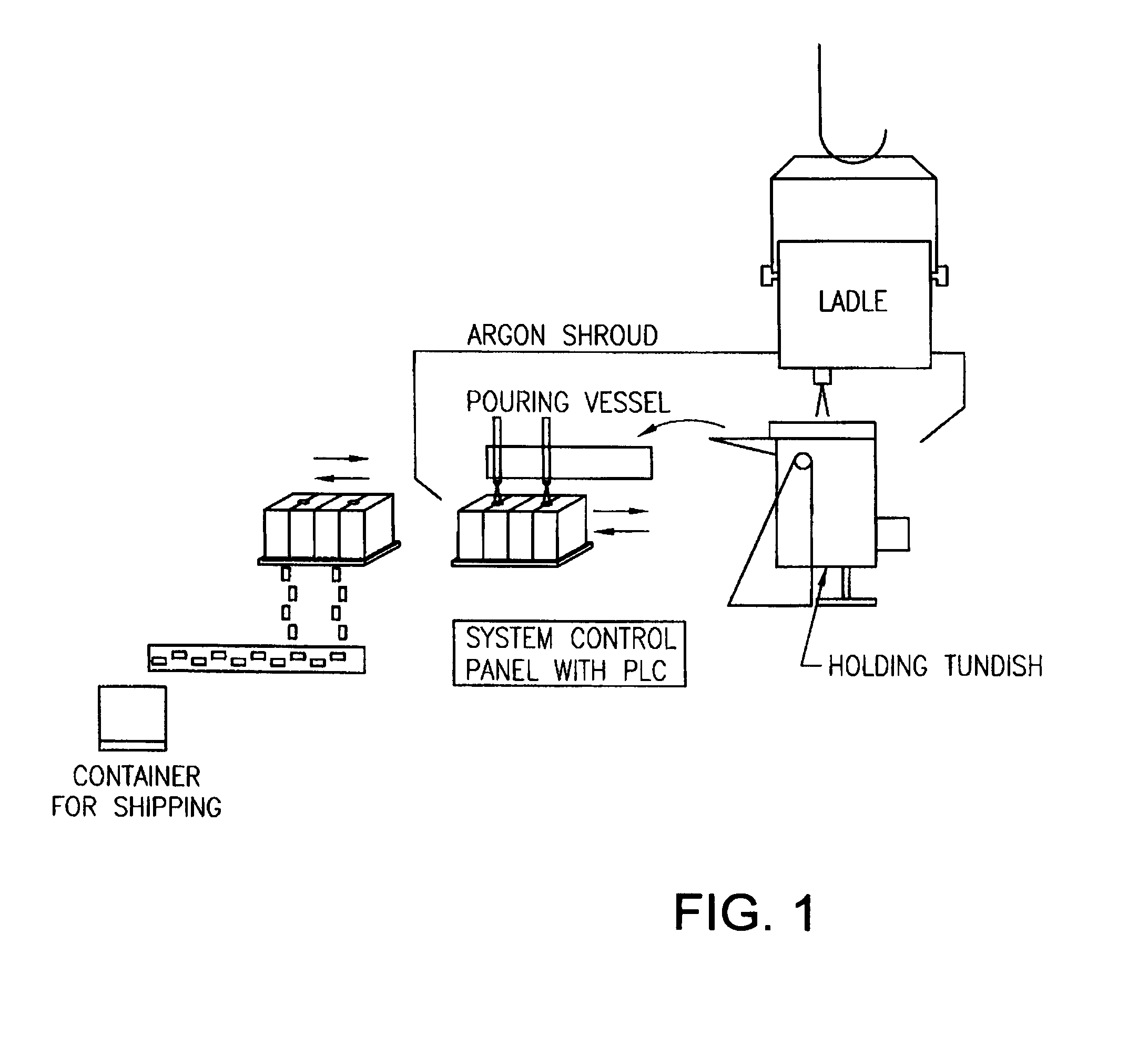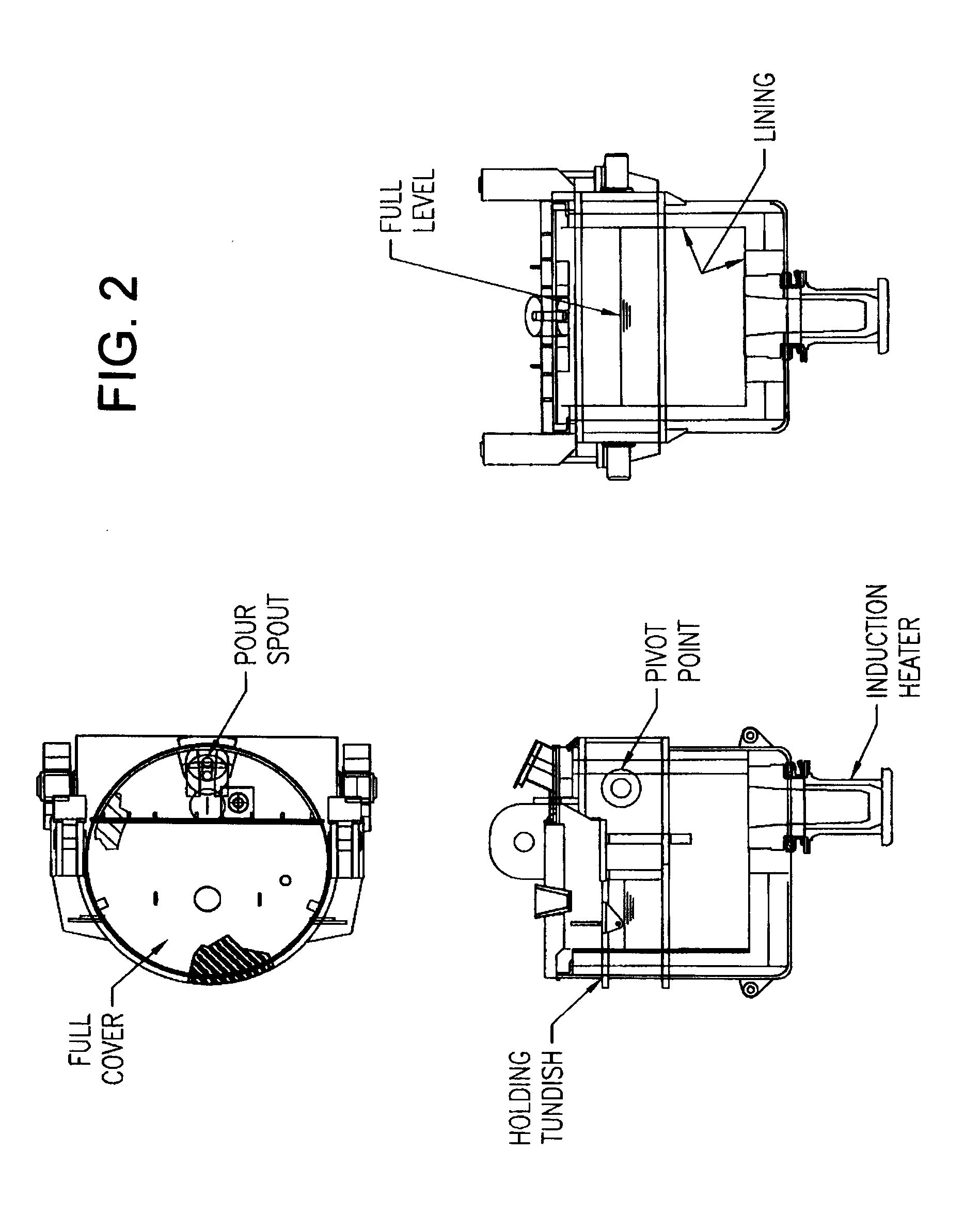Method and apparatus for manufacturing metal bars or ingots
a technology of metal bars and ingots, which is applied in the direction of manufacturing tools, casting plants,foundry moulding apparatus, etc., can solve the problems of increasing manufacturing costs, reducing manufacturing flexibility, and traditional manufacturing systems for producing these small ingots and bars are fairly limited, so as to reduce environmental concerns, improve manufacturing flexibility, and improve production efficiency
- Summary
- Abstract
- Description
- Claims
- Application Information
AI Technical Summary
Benefits of technology
Problems solved by technology
Method used
Image
Examples
Embodiment Construction
[0066]With the method according to at least one possible embodiment of the present application, molten metal is refined and then transferred to a ladle. The metal is protected from the atmosphere by use of an insulating ladle cover, such as a rice hulls or vermiculite. Argon stirring is employed to improve and / or promote the homogeneity of chemistry and temperature, and to further improve and / or promote cleanliness. Argon shrouding is also used to protect, restrict, and / or minimize the molten metal from coming in contact with air. This greatly reduces, restricts, and / or minimizes the opportunity for re-oxidation to occur.
[0067]The molten metal is bottom poured (see FIG. 1), using the inert argon shroud, into a sealed holding tundish. The holding tundish of the present application comprises a lid and a base. The lid has openings which permit argon backfill flooding of the sealed holding tundish, and a port for continuous temperature measurement. The sealed design minimizes heat and a...
PUM
| Property | Measurement | Unit |
|---|---|---|
| Temperature | aaaaa | aaaaa |
| Diameter | aaaaa | aaaaa |
Abstract
Description
Claims
Application Information
 Login to View More
Login to View More - R&D
- Intellectual Property
- Life Sciences
- Materials
- Tech Scout
- Unparalleled Data Quality
- Higher Quality Content
- 60% Fewer Hallucinations
Browse by: Latest US Patents, China's latest patents, Technical Efficacy Thesaurus, Application Domain, Technology Topic, Popular Technical Reports.
© 2025 PatSnap. All rights reserved.Legal|Privacy policy|Modern Slavery Act Transparency Statement|Sitemap|About US| Contact US: help@patsnap.com



